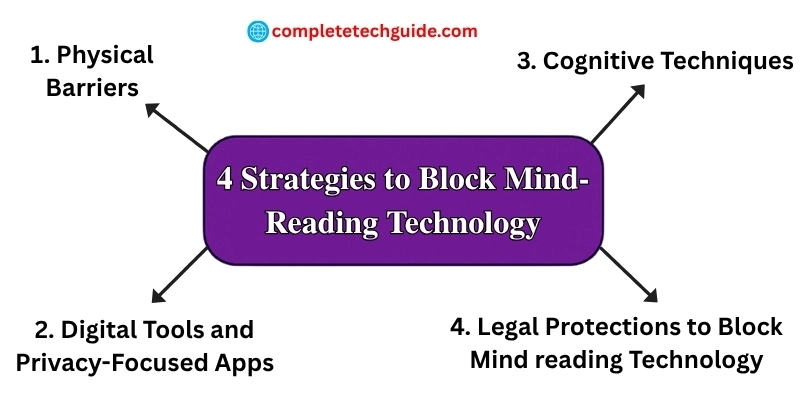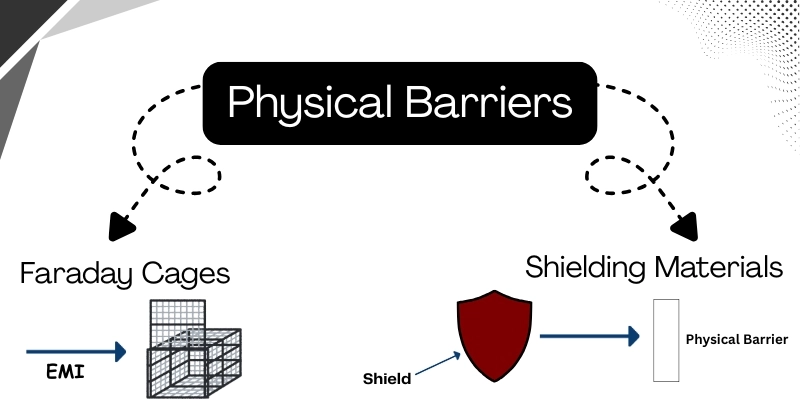How to Block Mind-Reading Technology: Practical Strategies to Protect Your Mental Privacy
Published: 6 Aug 2025
As technology advances, mind-reading technology is moving from science fiction to reality. Brain-computer interfaces (BCIs), artificial intelligence, and techniques such as EEG and fMRI are being developed to understand brain activities.
These technologies are capable of understanding thoughts, emotions, and objectives. While they improve healthcare and communication, they also create privacy issues. Unauthorized access to your ideas is a serious concern as these technologies continue to advance.
It’s essential to protect your mental privacy as the tech industry advances. This article will examine measures to prevent mind-reading technologies, including physical obstacles, digital tools, mental techniques, and legal safeguards.

Understanding Mind-Reading Technology
Mind-reading technology refers to systems that can read and analyze brain signals. These technologies utilize electroencephalography (EEG), functional magnetic resonance imaging (fMRI), and other neuroscience techniques to monitor and understand the electrical signals generated by the brain.
How Does Mind-Reading Technology Work?
Brain-computer interfaces (BCIs) work by detecting and decoding the electrical activity of the brain. These gadgets can detect brain waves and apply algorithms to analyse them, resulting in insights, emotions, or commands.
For Example: EEG-based devices detect the electrical impulses in the brain, which can be analyzed to determine what the individual is thinking or feeling.
BCIs are currently being used for applications such as controlling prosthetic limbs or helping communication for individuals with disabilities. These technologies are also being explored for commercial and military use, making the need to protect mental privacy even more critical.
Effective Strategies to Block Mind-Reading Technology
As mind-reading technology advances, it’s essential to employ a variety of protective measures to prevent unauthorized access to your brain activity. Here are some effective strategies:

1. Physical Barriers
The first line of defence against mind-reading technology is physical shielding. Just like we block other types of radiation, we can block mind-reading signals with special materials that interfere with electromagnetic signals.
- Faraday Cages
A Faraday cage is an enclosure made of conductive materials that block electromagnetic fields. By placing yourself or your devices inside a Faraday cage, you can block the electromagnetic signals that mind-reading technologies rely on to interpret brain activity. Faraday cages can be custom-built or purchased in various forms, such as Faraday bags or rooms.
- Shielding Materials
Various materials, such as aluminum or copper, can be used to shield yourself from electromagnetic fields. These materials can be incorporated into wearable gear like hats or blankets, or used to create protective barriers around electronic devices. Simply wrapping your devices in these materials can prevent unauthorized access to your brain activity.
2. Digital Tools and Privacy-Focused Apps
Using digital tools and apps that prioritize privacy can help protect against unwanted access to your brain data.
- Signal Jammers
Signal jammers are devices that disrupt wireless signals, especially those used in mind-reading technology. These jammers operate by producing noise or turbulence that interferes with signals sent via brain-computer interfaces, thereby reducing their capacity to read brain activity.
- Privacy-Focused Apps
Applications that enhance privacy, such as VPNs and encrypted communication tools, can prevent mind-reading gadgets from accessing personal data transmitted digitally. Apps like BeTimeful help users limit their screen time and exposure to gadgets that may collect sensitive mental data.
3. Cognitive Techniques
Training your mind to resist external influence can also help to block mind-reading technologies. While these technologies rely on brain activity monitoring, developing mental abilities for resilience can help prevent external systems from successfully reading your ideas.
- Mindfulness and Meditation
Mindfulness activities and meditation are excellent techniques for improving your mental defences. Regular mindfulness sessions can help you become more aware of your thoughts and interests, making it more difficult for external equipment to understand your brain activity.
Deep breathing and controlled visualization can help you build a mental barrier that effectively blocks mind-reading technologies.
- Mental Exercises and Visualization
Mental activities can also help redirect your attention away from annoying ideas, making it more difficult for external sensors to detect and analyse your brainwaves. For Example, demanding problem-solving tasks.
Visualization methods can help strengthen your mental defences by picturing a protective barrier surrounding your mind.
4. Legal Protections to Block Mind reading Technology
As mind-reading technology becomes more prevalent, governments and organizations need to establish legal frameworks to protect individuals’ mental privacy.
- Neuro Privacy Laws
Laws specifically designed to protect mental privacy and Neuro Privacy are necessary to ensure that individuals’ thoughts and brain data are not accessed without their consent.
Some countries and regions are already considering the implementation of these laws, recognizing the possible risks associated with mind-reading technology.
Supporting these laws on blocking mind-reading technology through advocacy and awareness can help protect mental privacy on a global scale.
- Informed Consent
Informed consent is a fundamental legal principle that should control the use of mind-reading technology. Before undergoing any brain scan or neuroimaging procedure, patients should be thoroughly informed about the technology’s capabilities as well as its possible risks.
Recognizing that you have control over your brain data is necessary for safeguarding mental privacy.
Conclusion
While mind-reading technology holds significant potential for advancements in healthcare, communication, and other fields, it also raises serious concerns about mental privacy. As technology evolves, it’s important to take proactive steps to protect yourself from unauthorized access to your thoughts.
By employing a combination of physical barriers, cognitive techniques, digital tools, and legal protections, you can safeguard your mental privacy and retain control over your own brain data. It’s also important to stay informed about developments in this field and advocate for regulations that protect individual rights in the digital age.
Questions on How to Block Mind Reading Technology
Here are some FAQs about the techniques of blocking mind reading technologies.
Mind-reading technology encompasses devices and procedures that analyze brain activity and decode neural signals to comprehend thoughts, emotions, or intentions. This technology is still in its early phases, but it shows great promise for a wide range of applications.
Yes, there are various options for preventing mind-reading technologies, including the use of physical shielding materials, digital privacy tools, and intellectual practices such as mindfulness.
You can protect yourself by using privacy-focused apps, creating physical barriers like Faraday cages, practicing mental resilience through meditation, and supporting laws that protect neuroprivacy.
In some regions, laws are being introduced to safeguard mental privacy. It’s important to stay informed about these developments and advocate for stronger neuro privacy protections.

- Be Respectful
- Stay Relevant
- Stay Positive
- True Feedback
- Encourage Discussion
- Avoid Spamming
- No Fake News
- Don't Copy-Paste
- No Personal Attacks



- Be Respectful
- Stay Relevant
- Stay Positive
- True Feedback
- Encourage Discussion
- Avoid Spamming
- No Fake News
- Don't Copy-Paste
- No Personal Attacks





